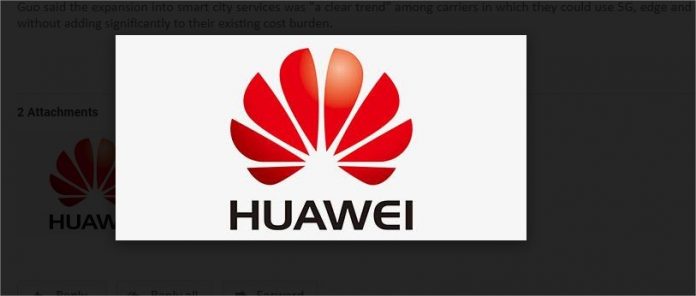DNA
Islamabad 07 AUG : Huawei top brass are making a rare appearance in the limelight this week at an online summit for customers and media. The modest conference over several days is a shadow of the expansive company events of the past, like the annual Shanghai confab where 20,000 customers would pack out a convention center.
But even so, the intense interest in the company meant the event caught the attention in advance of international media.The title, “Better World,” gives a sense of the charm offensive nature of the event. The driving theme is the potential for 5G, Huawei and mobile in general to tackle the coronavirus and drive the recovery, not to mention help deal with climate change.
Guo Ping, the current rotating CEO, pointed to the company’s healthy 450 billion-yuan (US$64.3 billion) revenue from a “complicated” first half and promised to continue investing heavily in R&D.
“We’re keeping focus and doing what we do best,” he said, hitting some familiar talking points. “We play a vital role in the global ICT industry… We have a broad set of capabilities spanning 5G, cloud, AI and industry applications.”
For operators rolling out 5G, he advised: “Prioritize customer experience and spend money where it is needed most to maximize value of existing networks.
“5G deployment should prioritize hotspots and key industry applications. This is the only way to unlock the potential of 5G.”
Some of Huawei’s efforts in unlocking 5G’s potential are of genuine interest to the wider industry.
Guo spent some time on the role of Huawei and partners during the pandemic crisis early this year. China Telecom famously built a pop-up 5G network in 24 hours that allowed, among other things, doctors to carry out remote ultra-sounds from 700km away.
Telemedicine was one of nine areas where the telecom industry can help deal with COVID-19 and assist in the recovery, Guo said.
Beyond healthcare, he cited manufacturing, aviation and smart city use cases.
He said a Chinese aircraft maintenance firm was now carrying out remote aircraft inspection with the help of 5G-enabled 4K livestreams, cutting labor cost alone by nearly four-fifths.
In aviation, Hong Kong airport’s 5G private network had created a new ecosystem for the airport and partners, with the ability to analyze passenger and baggage flows and enable baggage tracking and self-driving baggage trucks.
In Xiong’an, the new development hub under construction near Beijing has 7,400 5G base stations that deliver network slices for smart banking, autonomous driving and environmental monitoring.
Guo said the expansion into smart city services was “a clear trend” among carriers in which they could use 5G, edge and cloud to deliver services without adding significantly to their existing cost burden.

















